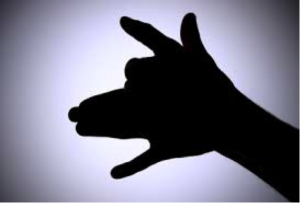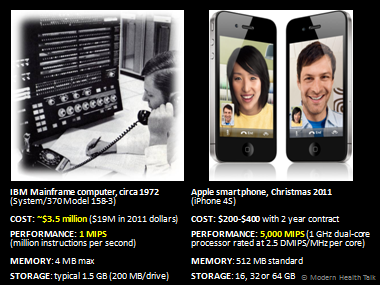Smartphone Medical Imaging

Today’s post on smartphone medical imaging summarizes an article on digital microscopy by Ariel Sabar for Smithsonian Magazine.
In “Star Trek,” chief medical officer Leonard “Bones” McCoy wands a body with a medical “tricorder,” and seconds later it reports the patient’s condition. The device could do almost anything, including heart rate & EKG, brain scans & EEG, and more.
Today we’re getting very close to doing all that on a smartphone. UCLA professor Aydogan Ozcan adds advanced imaging techniques to a smartphone and turns it into a powerful microscope to count red and white blood cells, screen urine for kidney disease, spot flu or HIV viruses, or test water for toxic chemicals, parasites and bacteria. His goal is to make these capabilities so small, cheap and idiot-proof that you can easily carry our own tricorder in your pocket.
Environmental Monitoring
Researchers working with Ozcan demonstrated a “scope” that was attached to a Samsung Galaxy to test for abnormally high levels of Mercury, since that can build up in fish and endanger our food supply. The attachment used colored LEDs to shine red & green beams of light through a seawater sample and onto the phone’s image sensor, and an app then analyzed the subtle color shifts to tell if the water was safe.
While similar tests in a traditional laboratory are very expensive, this one was done with a $37 attachment that was made with a 3D printer. It’s mostly the algorithms that give his smartphones the ability to see what the human eye can’t, and it’s the wireless network that can then send the results, along with time and GPS location data, back to a doctor or researcher.
Ozcan’s software feeds environmental measurement data to epidemiologists, public health officials, and others to help detect and prevent the spread of disease or contamination, much like crowd-sourced traffic data. If the 3 billion global smartphone owners had that ability, just imagine what scientists could do with real-time data from across the globe.
The smartphone’s ability to act not just as a medical tricorder but also to help safeguard public health is vast.
The Third World
Mobile phone-powered health care in Sub-Saharan Africa, South America, and parts of Asia today depends mostly on basic “telemedicine” text messages that remind people to keep appointments, take medications and recognize simple disease symptoms. Largely absent are smartphones, but Ozcan’s work is valuable because it eliminates the cost of modern diagnostic equipment, and it’s much easier to use and transport.
With smartphone attachments and minimal training, health workers can quickly test blood for malaria and HIV, and they can test water for E. coli bacteria. Even non-medical people could eventually use their phones to test if water is safe to drink and food safe to eat, and they could test for specific allergens.
On-the-spot diagnosis is key to caring for people who move about or live in distant villages, because any delay in getting lab test results can mean the person is no longer around. Oacan’s work eliminates that delay and supports point-of-care.
As described in The Smartphone Physical, various other innovators have built inexpensive smartphone attachments for things liked eye exams and ultrasounds and that measure things like blood pressure, blood oxygen saturation & pulse, lung function, heart electrophysiology (EKG), and body sounds (digital stethoscope). And then there are the medical devices that connect wirelessly to the smartphone, like the Scanadu SCOUT, ScanaFlu and ScanaFlo. (See Related Articles list for more examples.)
Image Magnification Without Lenses
How can a smartphone’s tiny camera count blood cells and determine if they are healthy without having some expensive optics? Well, it seems that part of the trick is distance, like the animal image created by your hand and projected on a wall several feet away. The closer your hand is to the light source, the larger the image. With that simple technique and some fancy software, Ozcan was able to count hundreds of thousands of cells in seconds and make the phone function like a hospital cytometer, all for about $10.
The next challenge was to move beyond just counting cells and to also see inside. Ozcan found that light from an LED, if trained through a pinhole, created a hologram-like image as it passed through the cells. With years of experimentation and refinement, Ozcan was able to see things as small as an individual flu virus. He reportedly is on the cusp of another breakthrough: detecting a single DNA molecule, again with help of that smartphone.
Smartphone Compute Power
What made all of this invention possible was the tremendous compute power of the smartphone itself. As I wrote in Moore’s Law and the FUTURE of Healthcare, the older iPhone 4 is more than 5,000 times faster than a multimillion-dollar mid-1970s era mainframe computer, and with so much computational power at one’s disposal, a lot can be done with advanced software.
I’ve long seen the phone as a health gateway, connecting the remote monitoring services to the many sensors in homes, cars, clothing and on our bodies – sensors that measure motion, contact, temperature, moisture, pressure, light, sound, chemicals, and more. With the addition of these inexpensive sensors, the smartphone can truly function like a Star Trek tricorder.
Read the original article for more health applications of his important work. [And watch this video, added 2/28/2019.]
Related Articles
- The Smartphone Physical: Checkup of the Future?
- MIT researchers use smart phones to monitor health
- This $200 iPhone Case Is An FDA-Approved EKG Machine
- Wello iPhone case tracks several points of health
- Smartphone app lets you monitor lung health
- Blood Glucose Meters: Monitoring Diabetes on Your Phone
- Using the iPhone to give the “finger” to finger pricks
- Under Skin Blood Test Sends Lab Results to Phone
- Medicine Unplugged: Your phone, DNA and data
- Smartphone does Vital Signs
- Blood Pressure Monitor for iPad, iPhone and iPod touch
- Smartphones starting to bring Hospital Care Home
- A Doctor in Your Pocket: Future of Personalized Medicine
- The Digital Diagnosis
- FDA to regulate Mobile Medical Apps, seeks public input
- Mobile & Smartphones in Healthcare: Infographic

RELATED 3RD PARTY ARTICLES:
Apple Has Just Ushered In The Era Of Digital Health (Forbes, 1/17/19) Apple Watch has brought the Star Trek tricorder vision to the wrist. As medical devices keep getting smaller, cheaper, more accurate, and easier to use, that trend will cause many medical functions to move down-market from physicians in clinics to consumers everywhere, ushering a new Era of Digital Health.